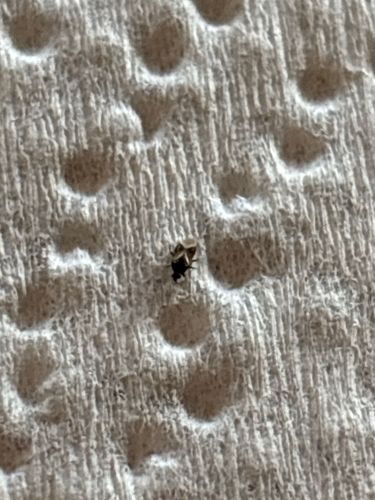Booklouse (or Psocid)
Scientific Name: Psocoptera (order), various genera and species within
Order & Family: Order: Psocoptera, Family: Various (e.g., Liposcelididae, Psocidae)
Size: Typically 1-2 mm, though some species can be larger.

Natural Habitat
Damp, dark, and undisturbed places, feeding on mold, fungi, starch, and organic debris. Commonly found in books, papers, food storage areas, old furniture, walls, and sometimes new construction due to moisture. They thrive in high humidity.
Diet & Feeding
Booklice feed on microscopic mold, fungi, starches from book bindings, wallpaper paste, cereal products, and other organic debris. They do not bite humans or pets.
Behavior Patterns
They are typically active at night and avoid light. They reproduce quickly in suitable conditions (warm and humid). Most booklice are wingless or have vestigial wings, and they move by crawling. Their presence often indicates high humidity or moisture problems.
Risks & Benefits
Potential risks include contamination of stored food products and damage to books, documents, and other starchy materials, especially in large infestations. They do not transmit diseases to humans or cause structural damage to homes, though their presence can be indicative of underlying moisture issues. Generally considered nuisance pests. No direct benefits to humans, but they are part of the decomposer community in their natural habitat.
Identified on: 10/10/2025